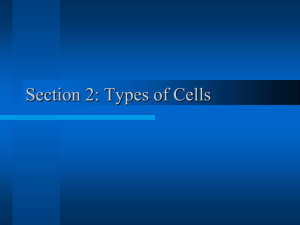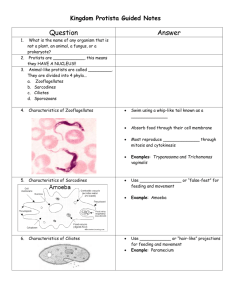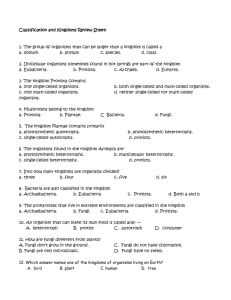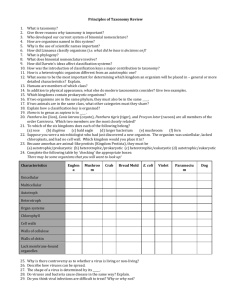Protista LAB - science
advertisement
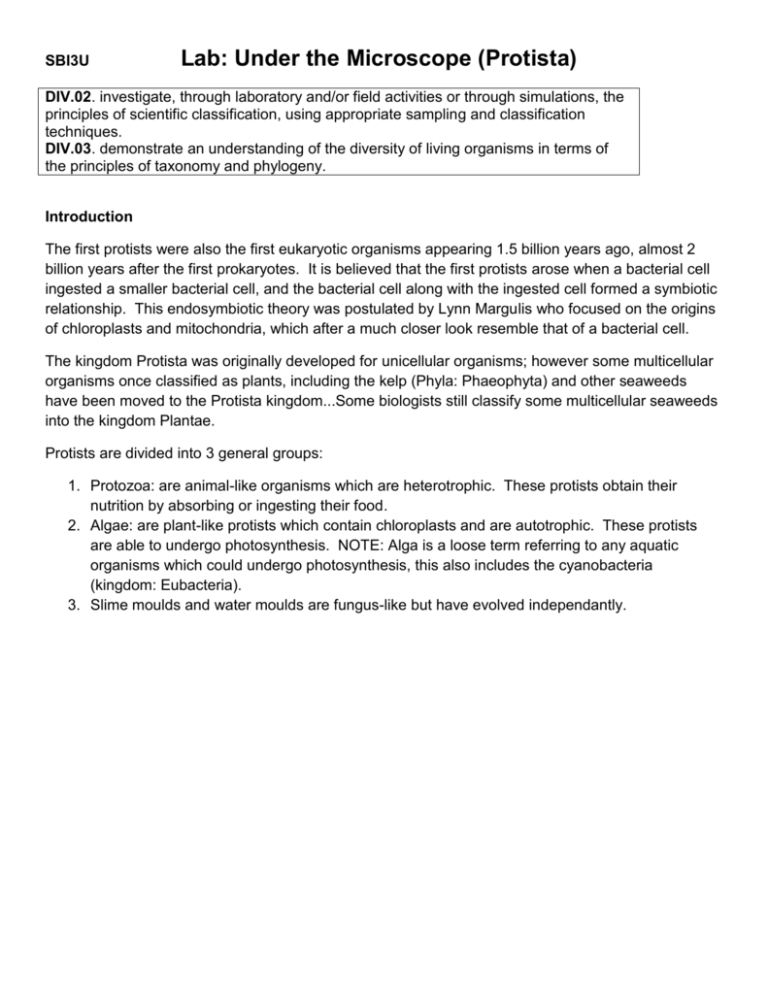
SBI3U Lab: Under the Microscope (Protista) DIV.02. investigate, through laboratory and/or field activities or through simulations, the principles of scientific classification, using appropriate sampling and classification techniques. DIV.03. demonstrate an understanding of the diversity of living organisms in terms of the principles of taxonomy and phylogeny. Introduction The first protists were also the first eukaryotic organisms appearing 1.5 billion years ago, almost 2 billion years after the first prokaryotes. It is believed that the first protists arose when a bacterial cell ingested a smaller bacterial cell, and the bacterial cell along with the ingested cell formed a symbiotic relationship. This endosymbiotic theory was postulated by Lynn Margulis who focused on the origins of chloroplasts and mitochondria, which after a much closer look resemble that of a bacterial cell. The kingdom Protista was originally developed for unicellular organisms; however some multicellular organisms once classified as plants, including the kelp (Phyla: Phaeophyta) and other seaweeds have been moved to the Protista kingdom...Some biologists still classify some multicellular seaweeds into the kingdom Plantae. Protists are divided into 3 general groups: 1. Protozoa: are animal-like organisms which are heterotrophic. These protists obtain their nutrition by absorbing or ingesting their food. 2. Algae: are plant-like protists which contain chloroplasts and are autotrophic. These protists are able to undergo photosynthesis. NOTE: Alga is a loose term referring to any aquatic organisms which could undergo photosynthesis, this also includes the cyanobacteria (kingdom: Eubacteria). 3. Slime moulds and water moulds are fungus-like but have evolved independantly. Part 1 Prepared slides: 1. Obtain prepared slides for the different protists (Volvox, Euglena, Paramecium caudatum, Amoeba proteus, diatoms . 2. Focus up and down through the specimens. 3. Draw a few specimens from each slide OR take an image through the ocular lens using your cell phone / iPad camera 4. Record the magnification you are viewing the specimen: 40X, 100X or 400X 5. Label your diagrams to the right: of the drawing Name: Kingdom: _______ Phylum:_________ Viewed @ 400X magnification. Actual size: . Part 2: Pond Water 1. Place a few drops of the pond water and a piece of algae/leaf on the depression slide. Place a cover slip over the depression. 2. Observe the organisms under low power. Remember to focus up and down through the sample of water. 3. You may use the medium objective lens to view more detail of the smaller organisms. 4. Choose 4 interesting organisms and sketch them OR take a photo. Identify the image as being Protista or Animalia. (Note: not all of these will be protista...is it moving and multicellular = Animalia). Questions: 1. 2. 3. 4. What are the characteristics of diatoms? How are they used in society? Describe how an amoeba moves? Eats? What is the function of the eyespot in the euglena? a. What is the dual role of the cilia? b. Describe the function of a macronucleus, and micronucleus in a paramecium. 5. Describe the characteristics of a volvox colony. Kingdom: Protista Category Level 1 (50-59%) Level 2 (60-69%) Level 3 (70-79%) Level 4 (80-100%) Knowledge and Understanding understanding of the characteristics of organisms from the kingdom Protista. DI3.03. Demonstrates limited understanding of the characteristics of organisms from the kingdom Protista. Demonstrates some understanding of the characteristics of organisms from the kingdom Protista. Demonstrates considerable understanding of the characteristics of organisms from the kingdom Protista. Demonstrates thorough understanding of the characteristics of organisms from the kingdom Protista. Thinking and Investigation Identifies and draws diagrams/photos of the representative Protista from the prepared slides. DI2.02. Identifies and draws diagrams of the representative Protista from the prepared slides with limited depth. Identifies and draws diagrams of the representative Protista from the prepared slides with some depth. Identifies and draws diagrams of the representative Protista from the prepared slides with considerable depth. Identifies and draws diagrams of the representative Protista from the prepared slides with a high degree of depth. Thinking and Investigation Investigates the biotic components found in pond water, identifies and draws diagrams DI2.02. SI1.11 Investigates the biotic components found in pond water, identifies and draws diagrams with limited depth. Investigates the biotic components found in pond water, identifies and draws diagrams with some depth. Investigates the biotic components found in pond water, identifies and draws diagrams with considerable depth. Investigates the biotic components found in pond water, identifies and draws diagrams with a high degree of depth. Thinking and Investigation Investigation and research skills (use of microscope, magnification calculations). SI1.04, SI1.06, SI1.11 Identifies correct procedures and equipment with limited effectiveness. Identifies correct procedures and equipment with some effectiveness. Identifies correct procedures and equipment with considerable effectiveness. Identifies correct procedures and equipment with a high degree of effectiveness. Note: A student whose achievement is below Level 1 (50%) has not met the expectations for this assignment or activity

